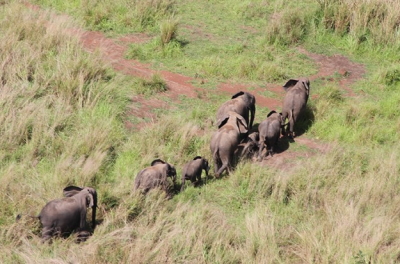Garamba National Park

Garamba National Park comprises an area of savannah, marshland and forests that is the habitat of the world’s four largest land mammals.
The vegetation is especially suited for great herbivores such as elephants (both forest elephants and bush elephants), giraffes, hippopotamus and rhinoceros. The park aimed to protect the last known wild population of northern white rhinoceros. By 2016 it had lost all of its northern white rhinos (the species has become extinct in the wild), 95% of its elephants, most of its Kordofan giraffe and an estimated 80-90% of other large mammals
Community Perspective: Barbara reports on fieldwork she did at Garamba in the 1990s.


Map of Garamba National Park
Community Reviews
Barbara Boudreau
I did the field work portion of my Master's degree at Garamba in 1993 and 1995. Then, in December 1995, my husband and I got married at the Hippo Pool on the Dungu River right outside the park. We have wonderful memories from Garamba, and I understand now that the wildlife there is in grave danger and poaching has become rampant and constant. There were still lots of animals left when we were there, around 11,000 elephants and 35 rhinoceros. Now the number of elephants is down to around one thousand. Very sad, but the reality of a political system like the Congo's.
Community Rating
Site Info
- Full Name
- Garamba National Park
- Unesco ID
- 136
- Country
- Congo (Democratic Republic)
- Inscribed
-
1980 - In Danger
- Type
- Natural
- Criteria
-
7 10
- Categories
- Wildlife habitat - Fauna
- Link
- By ID
Site History
2007 Reinforced Monitoring
1996 In Danger
impact of the war and civil conflicts in the Great Lakes region.
1992 Removed from Danger list
1984 In Danger
very critical situation of the white rhinoceros population, now estimated to total less than 15 specimens
1980 Inscribed
Site Links
Unesco Website
Official Website
Related
In the News
Connections
The site has 27 connections
Damaged
Ecology
Geography
Human Activity
Timeline
Visiting conditions
WHS Names
WHS on Other Lists
World Heritage Process
The Plaque
 (external source)
(external source)